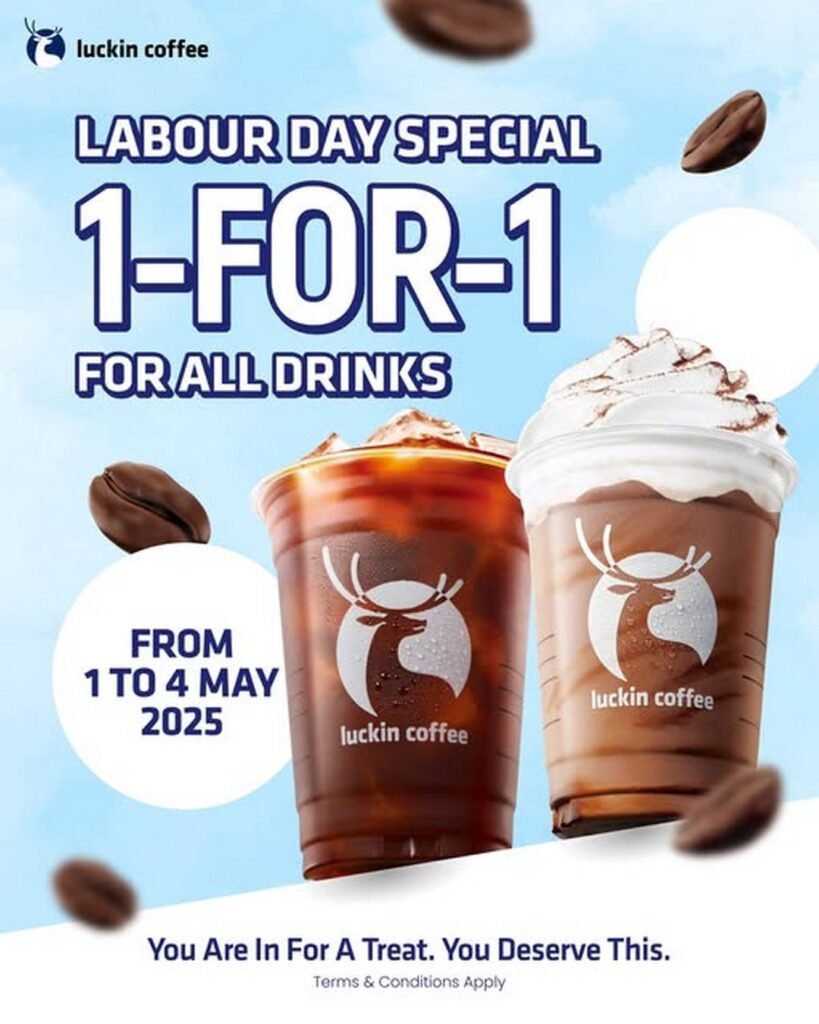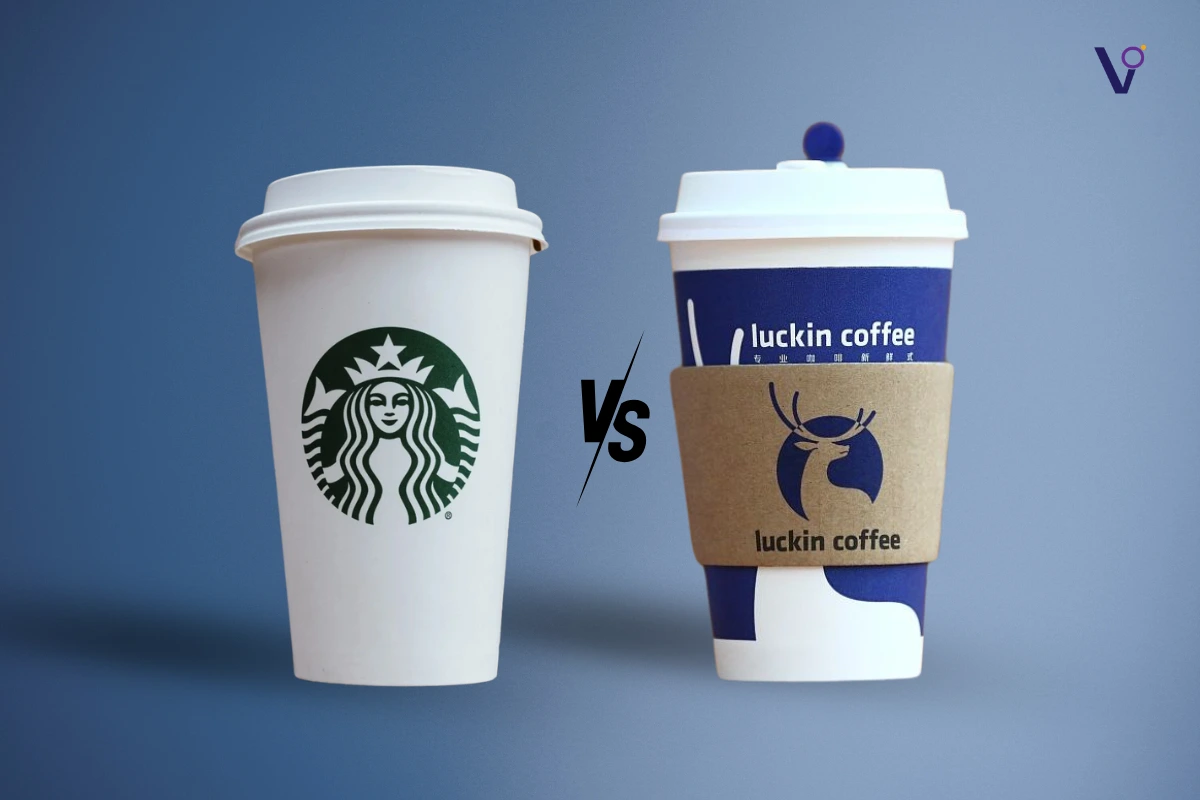When you consider China‘s largest coffee chain today, Luckin Coffee is a standout with more than 9,000 outlets, outselling Starbucks’ 6,000. But in 2020, a huge scandal over artificial revenues, shares plummeted 97%, and bankruptcy followed. Yet, Luckin pulled off a miraculous turnaround, posting full-year profits three years later.
The Road to Disaster: Luckin’s Early Failures and Fraud
Before the scandal, Luckin was bleeding money every year. In 2018, it lost $230 million, followed by $450 million in 2019, and $860 million in 2020. But still, it attracted investments by positioning itself as a technology firm revolutionizing the coffee business.
What made Luckin stand out from Starbucks and other coffee chains was mainly two things:
- All orders had to be placed and paid for via their app. This allowed baristas to focus on making coffee instead of handling payments.
- Most stores operated as pickup or delivery-only, with no seating area. This meant lower rent costs and smaller, cheaper stores.
This setup lowered their costs and allowed Luckin to offer coffee at much cheaper prices. They claimed to deliver “high quality, high affordability, and high convenience.” But if that was true, why were they losing so much money?
The answer lies in their pricing strategy. Luckin was essentially offering coffee for free by offering promotions and discounts of up to 80% off. Post-discount, an Americano at Luckin would cost around $1.40, whereas Starbucks would charge $4.50 for the same coffee.
Because of these low costs, Luckin experienced a massive influx of customers. But these customers mostly cared about price, not quality. Half of each dollar Luckin earned went to raw materials such as coffee beans and milk, and the other half went to rent and wages. This left nothing to cover other expenses like marketing and delivery fees.

In fact, Luckin was spending $3 to sell $1 worth of coffee in 2018, a net margin of -193%. Even after going public, they couldn’t improve much and remained deep in the red.
Luckin claimed this was part of a “loss leader” strategy:
- Offer cheap coffee to acquire customers quickly.
- Get customers hooked on the coffee.
- Gradually raise prices to become profitable.
But this backfired. They lost customers who came for cheaper prices as soon as the prices went up.
Luckin Coffee Turnaround
After the reveal most thought Luckin was done for. But surprisingly, the new team managed to pull off a stunning turnaround in just three years, turning losses into profits.
How did they do it? We can break it down into two parts: cost reduction and revenue growth.
Cost Reduction Moves
- Stopped rapid store expansion and closed underperforming stores. The number of stores fell from about 4,500 to 3,900 in 2020, a reversal from the previous reckless growth.
- Ended unprofitable side businesses like retail vending machines and fruit juice joint ventures, which were just distractions under the old management.
- Reduced sales and marketing costs by 60% in 2021. As a result, revenue decreased from 27% to 4%. This meant much less advertising and no more free coffee promotions.
- Raised prices by reducing discounts, which led to some customers leaving but improved the company’s financial health.
These moves tightened the belt, but cutting costs alone wasn’t enough to bring Luckin back from the brink.
Revenue Growth
The bigger story was how Luckin managed to grow revenue year after year, even in 2020 when they closed over 500 stores. This came down to product innovation and adapting to the Chinese market.
Product Innovation: Making Coffee Taste Like Something New
In 2019, Luckin accidentally hit gold with the “Brown Sugar Boba Latte.” This combined coffee with boba tea ingredients, appealing to young Chinese customers.
They invested heavily in product research, experimenting with tea, juice, jam, cream, flavored milk, and fresh fruit. The result was coffee drinks with sweet, funky flavors tailored to Chinese tastes.
This shift helped Luckin move beyond traditional coffee.
Some highlights:
- Their “Newer Latte” launched in September 2020, priced at 18 yuan (about $2.50), 2 yuan higher than a regular latte. It made up 30% of drinks sold in its first week.
- The “Coconut Milk Latte,” launched six months later at 20 yuan, became Luckin’s most successful drink, accounting for 17% of sales over the next year. It even became the top-selling coffee on Meituan, beating Latte and Americano.
- Continuing the trend of increasing prices with new best-sellers in 2023, Luckin introduced a green tea flavored latte.
In 2021, Luckin launched 113 new products — about one every three days — while Starbucks China released only about 20.
Luckin’s constant innovation helped them find new hits that drove growth, even if only a few became blockbusters.
Marketing to the Young Generation
From 2021, Luckin switched its marketing approach. They targeted young consumers by associating Luckin with four brand traits: professionalism, youth, fashion, and wellness.
Their ads ran heavily on social media platforms popular with young Chinese people, such as:
- WeChat, the Chinese super app
- Douyin, the Chinese TikTok
- RED, China’s version of Instagram
Luckin also chose brand ambassadors carefully, connecting with youth culture and lifestyle trends to make their coffee more appealing beyond just being cheap caffeine.
Luckin’s Strategy
To wrap up, here are the key elements of Luckin Coffee’s remarkable comeback:
- Aggressively cut costs by closing underperforming stores and dropping unprofitable ventures.
- Reduced marketing expenses and stopped free coffee giveaways.
- Raised prices while introducing innovative new coffee drinks that appealed to a broader, younger market.
- Leveraged social media marketing targeting youth with a trendy, fashionable brand image.
- Used app-based ordering to streamline operations and keep costs low.
- Maintained a fast product launch cycle, releasing many new drinks to find new hits quickly.
Luckin Coffee’s journey is a powerful lesson on how a company can fail big but bounce back bigger by rethinking strategy, focusing on customer preferences, and innovating constantly.
Luckin’s success came from innovative coffee beverages blending unique flavours, targeting young consumers, aggressive product R&D, smart brand positioning on social media, and consistently releasing blockbuster drinks at gradually higher prices.
Luckin outpaced Starbucks by streamlining operations through app orders, offering pick-up/delivery-only stores, cutting costs, driving product innovation, and rapidly opening cost-efficient outlets while flexibly adapting to local consumer preferences and trends.
Luckin’s new management cut costs, shut underperforming stores, axed free promotions, scaled back discounts, launched innovative coffee drinks, shifted to brand advertising, and consistently created best-sellers, driving revenue growth despite higher prices.



